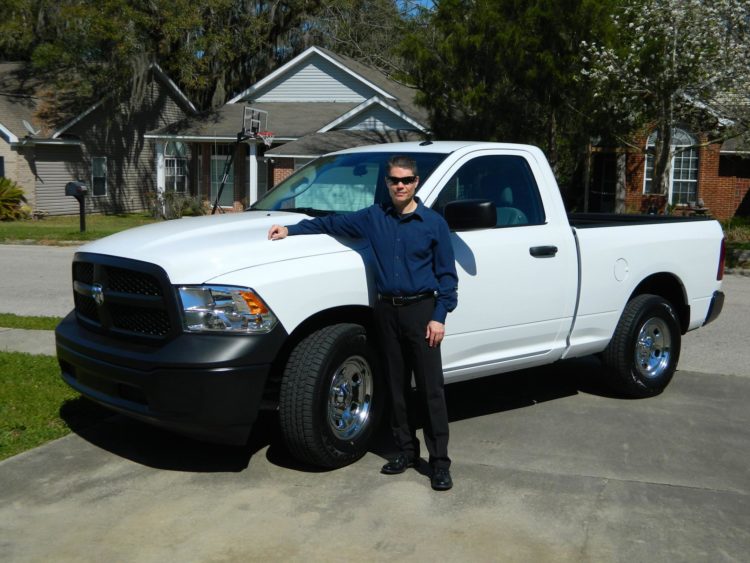
Almost every epic ride or great biking adventure begins with a drive to the trailhead. For mountain bikers, there are important things to consider when choosing the right vehicle. When I replaced my ride this year, I wanted the best vehicle for mountain biking, and these are the six things I considered as I began my search.
Bike carry

I prefer hitch-mounted bike carriers for transporting my bike, so I knew that my next vehicle had to have a hitch. Also, the clearance between the hitch, the rack, and the ground had to be high enough so that I would not scrape the hitch or the rack against the ground every time I turned into an elevated driveway. If you like to transport your bike inside your vehicle then find one that is large enough to safely and easily hold a bike inside. For those who prefer a roof rack, look for a vehicle that’s not too tall and can safely support a rack and bike.
Gear storage

I prefer to leave some of my gear in my vehicle at all times, so I knew my next vehicle had to have ample storage space that is easy to access and utilize. Additionally, it’s nice to have a place where you can put your sweaty pads, gloves, and helmets without stinking up the entire vehicle. Make sure there is space for riding buddies’ gear too. After all, no one likes to be cramped by people and gear when they are in a vehicle.

A new suede or leather interior looks really sweet, but how will it look when you get inside after an epic adventure, covered in dirt and sweat? Seat covers and floor liners will only protect so much. Brushed aluminum door sills will get scratched up by muddy shoes. Blood stains are easy to spot on light-colored fabrics and carpet. For hard-core riders who hits the trails several times a week, consider a vehicle with an interior that is dark, stain-resistant, and easy to clean. Save the pampering for the spa.
Get up the mountain

Fuel economy is a huge consideration for today’s car buyers. Smaller engines and light-weight vehicles will no doubt save money at the pump, but they might not get up the mountain you want to ride. Horsepower is a must for mountain travels, and four-wheel drive is a necessity for accessing backcountry trails. Think about what it takes to get to the trails you love to ride, as well as the trails you’ll want to ride someday. The ability to access epic trails is well worth the extra money spent on gas.
Consider your crew

A minivan has ample room inside for bikes, gear, and buddies. Photo by Bryon Dalton.
A mountain biker’s vehicle needs will also depend on crew size. Bringing a friend or two, along with their gear and bikes, will require a lot more space than going solo. For those who find themselves the designated trail shuttle driver, a vehicle with both plenty of seating and plenty of storage capacity is key.
[see_also id=’211858′]
My riding partner Bryon chose a mini-van so that he can carry both his and his wife’s bikes, gear, and luggage on their mountain bike adventures. I only need to carry myself, my bike, and my gear when I hit the trails, so I can get away with a vehicle that has less seating and cargo capabilities.
Does color matter?

Of course color is a very personal choice; some people prefer vibrant colors for their ride, while others go for more neutral tones like white, black, silver, or grey. Some riders use their vehicle to access remote trailheads via dusty dirt roads on a regular basis, in which case certain colors might be better suited than others. Black and white show off every little speck of dirt, whereas beige and brown are better for hiding the evidence of an off-road adventure. Keep in mind that red clay mud will permanently stain light-colored vehicles if it is not washed off quickly. And be sure to choose a color that compliments, not clashes with, the color of your bike.
The ride I chose

I love the simple practicality of an old-fashioned work truck.
At first, I leaned toward buying a compact SUV, but, in the end, I bought a full-size pick-up. It has the hitch I wanted with plenty of ground clearance so I won’t scrape the ground on steep inclines. The interior is durable and easy to clean. It has great storage space inside the cab, plus a whole bed I can utilize. It has plenty of power to haul my bike and gear anywhere I want to go. I think it’s the perfect vehicle for all my outdoor adventures.
Choosing the right MTB vehicle
Beyond the six considerations I mentioned above, there might be other factors to consider as well like whether you’ll want to sleep in your vehicle overnight, and whether you only use it for quick rides after work, or take it on week-long mountain bike adventures in other states.

Keep these things in mind when it’s time to shop for a new vehicle. After all, everyone deserves a vehicle that helps them ride, not one that keeps away from the trail.
What do you think is the best vehicle for mountain bikers? Let us know in the comments!


















